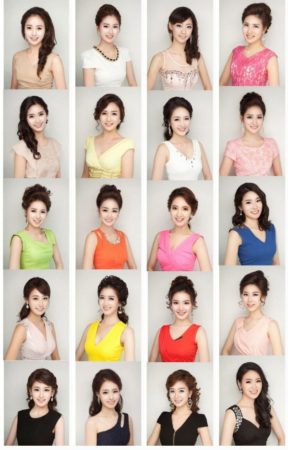Ethnic plastic surgery – a term coined by the industry as cosmetic surgery for altering features that are typical of a race – is on the rise. Often referred to as cosmetic surgery for the African American, Asian and Hispanic communities, many have argued that the industry has brought controversy to ethnic identity and beauty standards by removing a patient’s cultural features in order to look more “westernized”.
The cosmetic industry has largely been steered by Caucasian beauty demands. According to the American Society of Plastic Surgeons, between 2005 and 2013 in the United States plastic surgery procedures in minority races doubled, compared to a 35% increase in the Caucasian community. This includes a 56% increase in procedures performed on African-Americans, an 85% increase on Hispanics, and a whopping 125% increase of procedures performed on Asians (O’Connor, 2014).
It is estimated that over a million procedures took place in 2011 in the Asian region. The International Society of Aesthetic Plastic Surgery ranked South Korea as the plastic surgery capital of the world, overtaking the former champion that was Brazil. With 980,000 operations recorded in 2014, South Korea performs the most surgeries per capita on earth – approximately 20 procedures occur per 1000 people, compared to 13 per 1000 in the United States (Baer, 2015).
The most popular surgical procedure in the world is known as the blepharoplasty (known as the double eyelid surgery), where doctors make an incision along the lash line to remove excess skin to give a crease in the eyelid, making the eyes look bigger and more “western”. In 2014, the procedure was carried out on 1.43 million patients around the world. So popular is the procedure that former South Korean President Roh Moo-hyun had it done whilst in office in 2005.
Seoul, the 6th highest populated city in the world and capital of South Korea, is the hub of pushing such cosmetic procedures. In the neighbourhood of Gangnam (yes, to the fame of Psy’s number one hit), there are reportedly 500 cosmetic clinics within a square mile. In fact, the Beverly Hills of Seoul is dubbed the Improvement Quarter for this very reason. Statistically, one in five Korean women has had a cosmetic procedure (Marx, 2015).
One of the main desires for carrying out these procedures is striving for professional success as they enter adulthood. Many patients have vocalised that without such procedures, they are hindered in later life. In fact, the standard “Sweet Sixteen” rite of passage in Korean girls has been the blepharoplasty, with many students getting the procedure done during the school holidays, with the remainder of the class following suit and booking in at the end of the following term.
“When you are applying for university or applying for a job here, you put a picture of yourself on your resume or application. It is sort of taken for granted that how you look will often go into the decision” reported Julia Lurie in an episode of the hit podcasting series This American Life. When asked what the ideal stature of a beautiful woman was, the overall response within the Korean community was standardised – tall, thin, fair skin, small breasted and big eyes.
And it’s not surprising that the girls are taking this in. Many plastic surgeons target their advertising spaces around schools, universities and on public transport, with billboards advertising “Summer break is perfect for transformation. Will you consider it?”. Subway stations are decked out with full length mirrors for commuters to primp themselves on the way to their destination. Mothers are joining their daughters in procedures to give the “passed down through genetics” look. K-Pop star idols are given the ultimate makeover before their album release, ranging from nose jobs to double jaw surgery to give the desired heart shape face. And ironically, Korean beauty has become so standardized that the top 20 contestants in the 2013 Miss Daegu competition became a talking point on pop culture websites such as Reddit for looking like carbon copies of each other.
But it seems the trend of ethnic plastic surgery doesn’t solely lie over in the east, particularly for those who live in multicultural cities. The five boroughs of New York City have become the niche markets of ethnic plastic surgery. In the upper areas of Manhattan, the Dominican community are seeking consultations for butt lifts. In Queens, the Chinese community are getting rhinoplasties. Head over to Brooklyn, and the Russian community are having breast augmentations, whist in Chinatown, the Koreans are looking at jaw contouring, done by breaking the jaw and realigning it to get a slimmer silhouette.
There is cause for concern that ethnic plastic surgery is the result of wanting to assimilate to Caucasian beauty standards and facial features, particularly when it’s viewed as being as acceptable as putting on a face of make-up. Many argue that the patient’s desire for these procedures are done to enhance the features that one already has, whilst others believe that it’s a way of overcoming the pain of what once was bullying, comparing themselves to others or feeling inadequate looks wise compared to those within their society – even the once popular talk show Tyra addressed this topic, with host Tyra Banks openly admitting that she would not have achieved her level of success without conforming to certain beauty standards that weren’t typical of the African American community.
We want to hear from you – do you feel that this type of plastic surgery is done to heighten the person’s natural beauty, or to conform to Caucasian beauty standards?
Resources
Baer, D. (2015). The most popular plastic surgery operation in South Korea has a controversial past. Retrieved 12 July, 2016, from http://www.techinsider.io/the-most-popular-plastic-surgery-in-korea-2015-10
Marx, P. (2015). About face: Why is South Korea the world’s plastic-surgery capital?. Retrieved 12 July, 2016, from http://www.newyorker.com/magazine/2015/03/23/about-face
O’Connor, M. (2014). Is Race Plastic? My Trip Into the ‘Ethnic Plastic Surgery’ Minefield. Retrieved 12 July, 2016, from http://nymag.com/thecut/2014/07/ethnic-plastic-surgery.html


